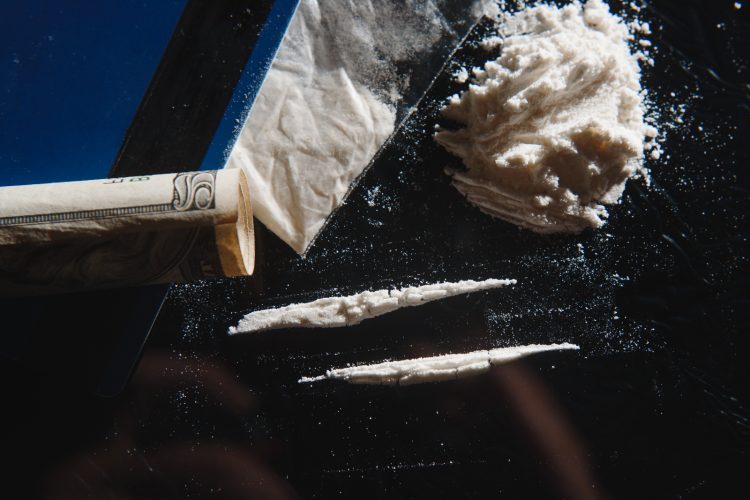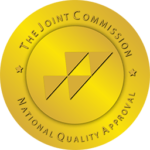Cocaine and crack are two forms of a powerful stimulant drug that have been wreaking havoc on individuals and communities for decades. While both drugs are derived from the coca plant, their forms, methods of use, and effects on the body and brain differ significantly. Understanding these key differences is crucial for those seeking help for drug use.
Chemical Differences
Cocaine Hydrochloride
Cocaine hydrochloride is the chemical name for the powdered form of cocaine. This white, crystalline powder is often mixed with other substances, such as cornstarch, talcum powder, or sugar, to dilute its potency. It is usually snorted or dissolved in water and injected into the bloodstream. Cocaine hydrochloride is water-soluble, which makes it easier to absorb through the mucous membranes in the nose or through intravenous injection.
Crack Cocaine
Crack cocaine, on the other hand, is created through a chemical process that involves mixing cocaine hydrochloride with baking soda or ammonia and water. The mixture is then heated until it forms a solid, rock-like substance. This process removes the hydrochloride, making crack less pure but much more potent. Crack is typically smoked using a pipe, which allows the drug to be rapidly absorbed into the bloodstream through the lungs.
Methods of Use
Snorting and Injecting Cocaine
Cocaine powder is usually snorted, which involves inhaling the drug through the nose. This method allows the cocaine to be absorbed through the nasal tissues and into the bloodstream. The effects of snorting cocaine can be felt within a few minutes and typically last between 15 to 30 minutes. Some users dissolve cocaine in water and inject it directly into their veins. This method delivers the drug quickly and produces a more intense high, but it also increases the risk of overdose and other health complications.
Smoking Crack
Crack is most commonly smoked, which delivers the drug rapidly to the brain. Smoking crack produces an almost immediate and intense euphoric effect, usually within seconds. The high from smoking crack is much shorter-lived compared to snorting or injecting cocaine, typically lasting only 5 to 10 minutes. The intense high and rapid onset can lead to a cycle of repeated use, as individuals seek to maintain the euphoric feeling.
Side Effects and Duration
Side Effects of Cocaine
Cocaine acts as a powerful stimulant, increasing levels of dopamine in the brain. This leads to feelings of euphoria, increased energy, and heightened alertness. The effects of snorting cocaine are less intense but last longer than smoking crack, usually between 15 to 30 minutes. Cocaine users may feel more sociable, confident, and energetic. However, these effects are followed by a crash, which can include feelings of fatigue, depression, and irritability.
Side Effects of Crack
The high from smoking crack is more intense and shorter-lived compared to snorting cocaine. Crack users experience a rapid, powerful high that lasts about 5 to 10 minutes. This intense high is often followed by a severe crash, which can include agitation, paranoia, and severe cravings for more of the drug. The rapid onset and intensity of crack’s effects contribute to its high potential for addiction.
Addiction Potential
Cocaine Addiction
Both crack and cocaine are highly addictive, but their potential for addiction differs slightly. Cocaine addiction can develop through repeated use, as individuals seek to maintain the drug’s pleasurable effects. The slightly longer-lasting effects of snorting cocaine may lead to different patterns of abuse and dependency compared to crack. Cocaine addiction can cause significant physical and psychological harm, including heart problems, respiratory issues, and mental health disorders. According to the CDC, the rate of drug overdose deaths involving cocaine nearly tripled from 1.6 per 100,000 in 2013 to 4.5 in 2018.
Crack Addiction
Crack is often considered to be more addictive due to the rapid onset and intensity of its effects. The quick, powerful high and subsequent crash associated with smoking crack can lead to a cycle of repeated use, as individuals seek to regain the intense euphoria. This pattern can quickly develop into a severe addiction. Crack addiction is associated with higher rates of physical and psychological harm, including an increased risk of overdose, mental health disorders, and social and legal problems.
Health Risks
Cardiovascular and Neurological Risks
The health risks associated with crack and cocaine use are serious and can be life-threatening. Both drugs can cause cardiovascular issues such as heart attacks, strokes, and hypertension. They can also lead to neurological problems, including seizures and cognitive impairments. Long-term use of cocaine and crack can cause significant damage to the brain and other organs, leading to chronic health issues.
Specific Risks of Cocaine Use
Snorting cocaine can damage nasal tissues and lead to chronic nosebleeds, loss of smell, and a chronic runny nose. Injecting cocaine increases the risk of infectious diseases such as HIV and hepatitis, as well as vein damage and skin infections. Cocaine use can also lead to severe psychological effects, including anxiety, paranoia, and hallucinations.
Specific Risks of Crack Use
Smoking crack can cause severe respiratory issues, including lung damage, respiratory infections, and chronic cough. The intense high and rapid onset of crack’s effects increase the risk of overdose and acute health problems. Crack users are also at higher risk of developing mental health disorders, including severe depression, anxiety, and psychosis.
Treatment Options for Crack and Cocaine Abuse
Comprehensive Treatment Plans
Understanding the differences between crack and cocaine is vital for developing effective treatment plans. Addiction to either form of cocaine requires comprehensive treatment that addresses both the physical and psychological aspects of addiction. Treatment centers often offer specialized programs tailored to the unique needs of individuals struggling with crack or cocaine addiction.
Medical Detox
The first step in treating cocaine or crack addiction is medical detox, which helps to safely manage withdrawal symptoms. Detoxification should be conducted under medical supervision to ensure the safety and comfort of the individual. During detox, medical professionals can provide medications and support to help alleviate crack and cocaine withdrawal symptoms and reduce cravings.
Behavioral Therapies and Counseling
Behavioral therapies and counseling are essential components of cocaine and crack addiction treatment. Cognitive-behavioral therapy (CBT), contingency management, and motivational interviewing are effective approaches that help individuals change their behaviors and develop coping strategies to prevent relapse. Counseling provides a supportive environment where individuals can address the underlying issues that contribute to their addiction.
Support Groups
Support groups such as Narcotics Anonymous (NA) and Cocaine Anonymous (CA) offer valuable peer support and encouragement for individuals in recovery from drug abuse. These groups provide a sense of community and accountability, helping individuals stay committed to their recovery goals. Participation in support groups can also help individuals build a network of sober peers and develop healthy relationships.
Overcome Crack and Cocaine Addiction at True Self Recovery
Understanding the differences between crack and cocaine is crucial for recognizing their unique challenges and health risks. Both forms pose severe health risks, including cardiovascular and respiratory issues, neurological damage, and mental health disorders.
At True Self Recovery, we offer comprehensive substance abuse treatment programs, including medical detox, behavioral therapies, counseling, and support groups, to address cocaine and crack addiction. If you or a loved one are struggling with drug addiction, get in touch with True Self Recovery to learn more about our programs and reclaim your life from addiction.
FAQs
What are the main differences between crack and cocaine?
The main differences between crack and cocaine lie in their chemical forms, methods of use, effects, and addiction potential. Cocaine is a powdered form that is typically snorted or injected, while crack is a crystalline form that is smoked. Crack produces a more intense and shorter-lived high compared to cocaine, and it is often considered more addictive.
Which form of cocaine is more dangerous?
Both crack and cocaine are dangerous and highly addictive, but crack is often considered more dangerous due to its rapid onset and intense effects. Smoking crack can lead to a quicker development of addiction and a higher risk of overdose compared to snorting cocaine.
Can crack and cocaine addiction be treated successfully?
Yes, crack and cocaine addiction can be treated successfully with comprehensive treatment plans that include medical detox, behavioral therapies, counseling, and support groups. A holistic approach that addresses both the physical and psychological aspects of addiction is essential for long-term recovery.
What are the health risks associated with crack and cocaine use?
The health risks associated with crack and cocaine use include cardiovascular issues such as heart attacks and strokes, respiratory problems, neurological damage, and mental health disorders. Both drugs can also cause severe psychological effects, including anxiety, paranoia, and hallucinations.
How long does it take to recover from crack or cocaine addiction?
Recovery from crack or cocaine addiction varies depending on the individual and the severity of the addiction. Treatment typically involves several stages, including detox, inpatient or outpatient rehabilitation, and ongoing aftercare. Long-term recovery requires ongoing commitment and support, and it may take months or even years to achieve and maintain sobriety.



